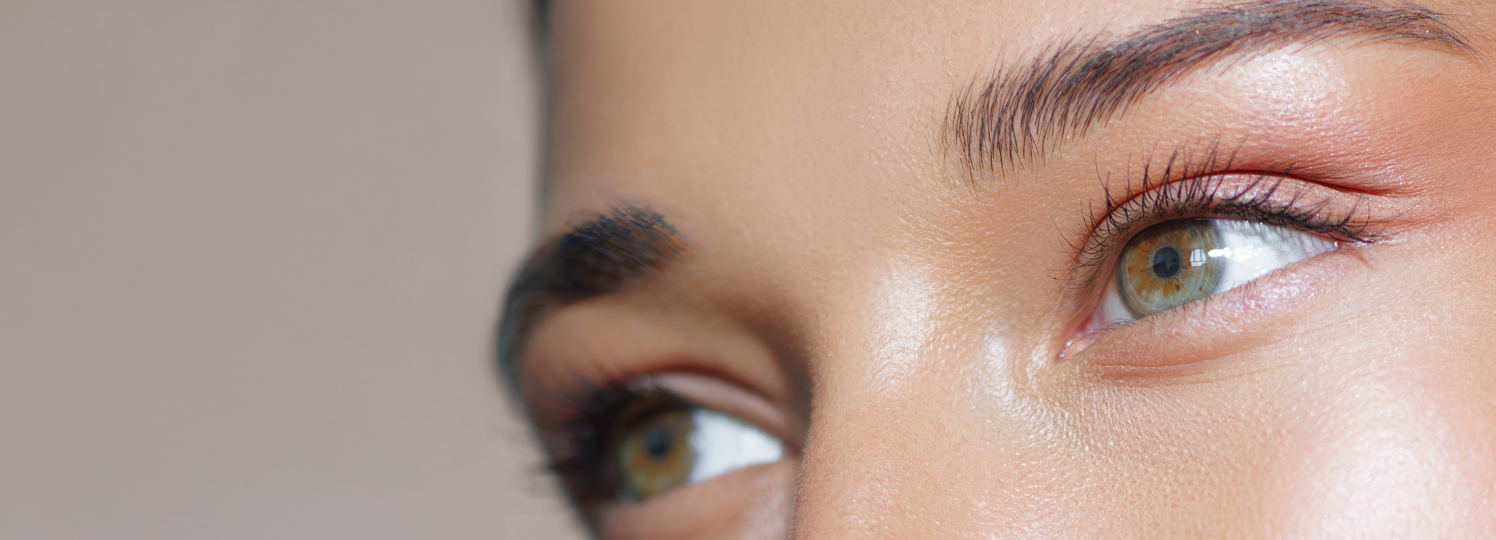

Eye Care



Eye Care
An intensely active treatment for the sensitive eye area especially designed for sensitive skins and skins with a tendency to fine lines and wrinkles. Skin identical Lipids treat the skin with gentle delicacy. Protecting and regenerating Vitamin E, A, C, H (Biotin) and Provitamin B5 (D-Panthenol) ensure a clearly visible Anti Aging effect. Available both in 15 ml jars and as a 7 ml ampoule.
15 ml Jar
Art.-Nr. 9027
7 ml Tube
Art.-Nr. 9423
Caprylic/Capric Triglyceride, Glycerin, Alcohol, Urea, Vegetable Oil, Glyceryl Stearate, Hydrogenated Phosphatidylcholine, D-alpha Tocopheryl Acetate, Panthenol, Stearyl Alcohol, Squalene, D-mixed-Tocopherols, Retinyl Palmitate, Sodium Ascorbyl Phosphate, Biotin, Lactic Acid, Sodium Hyaluronate, Allantoin, Citric Acid, Sodium Hydroxide
Caprylic/Capric Triglyceride:
Vegetable neutral oil (triglyceride) with short-chain fatty acids. Has moisturizing properties.
Alcohol:
Ethyl alcohol: Body identical. Has a refreshing and antibacterial effect. Also serves as a solvent for other ingredients. Contrary to claims to the contrary, there is no risk of a drying effect on the skin at normal application concentrations!
Urea:
The water-soluble urea is used in numerous cosmetic products. Urea is a component of the natural moisturising factors of the horny layer (content between 7 % and 12 %; up to half lower in chronically dry skin) and has a high water-binding capacity. It contributes to sustained moisturisation of the skin and reduces transepidermal water loss. Urea has a keratoplastic effect, in higher concentrations it has a keratolytic effect and is therefore also used in the care of skin affected by psoriasis or atopic dermatitis (neurodermatitis). Urea is also able to reduce the irritating potential of surfactants.
Vegetable Oil:
Skin-identical base oil made from vegetable raw materials, also labelled as Olus Oil.
Glyceryl Stearate:
Is a component of sebum, partially saponified fat, skin-protecting and moisturizing properties, consistency regulator and auxiliary emulsifier for lotions and creams.
Hydrogenated Phosphatidylcholine:
A phospholipid produced by the body.
D-alpha Tocopheryl Acetate:
Natural vitamin E acetate; storage form in the skin, is converted into the active form by dissolving the acetate bond; antioxidant with skin-protecting properties, e.g. against UV radiation, retains moisture, delays premature skin ageing
Panthenol:
D-panthenol = provitamin B5: Improves and increases the skin's ability to retain moisture, has an anti-inflammatory effect, reduces or inhibits itching. Stimulation of epithelialization: Small wounds (shaving), skin abrasions, blisters heal better. When used in hair care products, it is not only deposited on the hair and scalp, it also penetrates them and has a long-term effect. As pantothenic acid is an important component of healthy hair, the precursor D-panthenol serves as “food for the hair” according to scientific studies. It provides the hair with long-lasting moisture, improves the combability of the hair, reduces the formation of split ends, improves the condition of damaged hair, thickens the hair and gives it shine. The brittleness of fingernails is reduced.
Stearyl Alcohol:
A body-identical fatty alcohol, occurs as an intermediate product in fat metabolism, also present in small quantities in the epidermis. Provides consistency in emulsions.
Squalene:
Squalene: An oil that spreads well, is also present in sebum, improves the flow behaviour of sebum, valuable skin care oil. Obtained from the unsaponifiable part of olive oil.
D-mixed-Tocopherols:
Is the name of a mixture of natural tocopherols (vitamin E; D-alpha-, beta-, gamma- and delta-tocopherol). Vitamin E is the most important skin protection vitamin, which protects the skin from UV rays and oxygen radicals.
Retinyl Palmitate:
Is the storage form of vitamin A, which is converted into free vitamin A in the skin. It stimulates cell division and therefore has a strong regenerative effect, particularly on pre-aged skin and with prolonged use. Studies have even shown an increase in the collagen content of the skin, a slight reduction in wrinkles and an increase in skin elasticity.
Sodium Ascorbyl Phosphate:
Highly effective antioxidant and vitamin C donor for the skin
Storage form of vitamin C as a phosphate ester. Water-soluble vitamin with antioxidant properties. It acts against cell-damaging free radicals, protects unsaturated fatty acids from oxidation, is essential for the formation of collagen and thus the entire connective tissue as well as for the function of the immune system. Together with vitamin E, it is very suitable for preventing the formation of nitrosamines.
Biotin:
Vitamin H, important for the normal function of skin and hair
Lactic Acid:
Lactic acid. Occurs as a metabolic product in the body and on the skin, has a peeling effect on the horny layer in higher concentrations and at a low pH value of 2 to 3, supports the moisture content in buffered form (physiological pH value of the skin approx. 5.5) and preserves the skin's protective acid mantle.
Sodium Hyaluronate:
Sodium salt of hyaluronic acid. Natural moisturiser with skin-smoothing properties, important natural component of the lower skin layers (dermis). Formerly produced from rooster combs, now produced in better quality by biotechnology.
Allantoin:
Allantoin is a body-identical, water-soluble substance and is chemically related to urea. It is found in various plants but is now produced synthetically for use in cosmetics. Its most important property is the stimulation of new cell formation. It promotes collagen formation, skin regeneration and wound healing, stimulates desquamation, smoothes the skin and can have a soothing effect on atopic dermatitis.
Citric Acid:
Citric acid. Biotechnologically produced body-identical active ingredient. Occurs in the metabolism of the human organism and can also be found in low concentrations on the skin. It protects the skin from oxidative stress, supports the product protection of the antioxidants and regulates the pH value of the product.
Sodium Hydroxide:
Sodium hydroxide. Used to adjust the pH value of cosmetic products. Sodium and hydroxide ions are identical to the body.